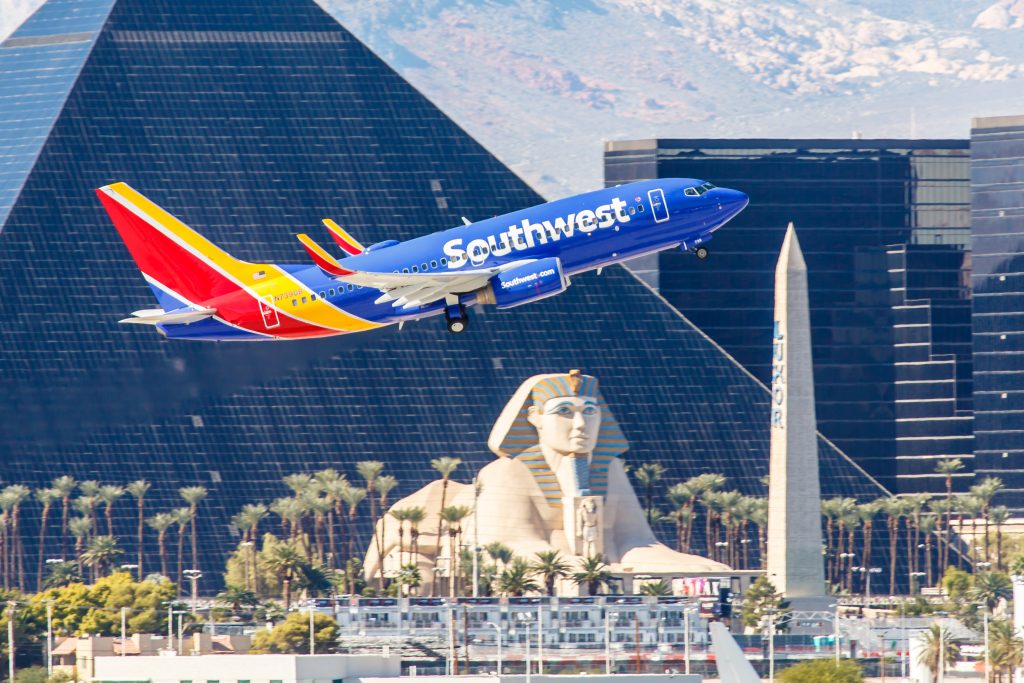Southwest Airlines Didn’t Make It to Hawaii in 2018 — What’s Next?
The popular low-fare airline’s long-promised Hawaii flights should get off the ground within the next few months.
In October 2017, Southwest Airlines (NYSE:LUV) officially announced that it planned to start flying to Hawaii. At the time, the popular low-fare carrier indicated that it would begin selling tickets at some point in 2018 and potentially begin service before the end of the year.
Despite lots of hype, Southwest Airlines still hadn’t announced flight schedules or launched ticket sales for its planned Hawaii service by the end of 2018. Luckily for Southwest fans, the airline is only a few months behind schedule. There’s still a good chance that the carrier’s first Hawaii flights will take off in March. However, this modest delay still represents a welcome reprieve for future competitors like Hawaiian Holdings (NASDAQ:HA).
Why Southwest was delayed
For the past year, the main thing standing in the way of Southwest Airlines beginning flights to Hawaii was the carrier’s need to secure “ETOPS” authorization. This is a special certification for using twin-engine aircraft on long overwater routes (or any other route that would entail being more than 60 minutes from the nearest possible diversion airport).
Achieving ETOPS certification is a lengthy process. One of the most time-consuming parts is creating — and receiving Federal Aviation Administration (FAA) approval for — a manual spelling out (among other things) detailed procedures for what to do in the event of an engine failure or any other type of inflight emergency far from the nearest airport.
Initially, Southwest’s management seemed confident that the carrier would receive ETOPS certification within a year or so of beginning the application process.
More recently, CEO Gary Kelly has walked back those comments, saying that the airline had been told all along that it would take 12 to 18 months. An April 2018 accident that killed a Southwest Airlines passenger and sparked an investigation into the FAA’s safety oversight of Southwest surely didn’t help speed the process along, either. The recent government shutdown could lead to some additional delays.
Reading the tea leaves
The good news is that the FAA signed off on Southwest’s ETOPS procedures and manuals last month. Southwest Airlines now can go ahead with formal simulations, followed by validation flights with FAA personnel aboard, after which it should receive its ETOPS authorization.
There’s a good chance that Southwest will be able to complete these last steps by the end of January. That would almost certainly be too late to launch Hawaii flights in February, especially because of the lead time required for crew scheduling.
March seems like a more realistic goal for beginning service to Hawaii. Indeed, Southwest’s management has repeatedly said that it will take weeks — not months — to begin service once the carrier receives its ETOPS authorization. Furthermore, the airline stated in a recent regulatory filing that it hopes to begin flying to Hawaii before the end of the first quarter.
It’s also notable that, while Southwest Airlines introduced several new routes in conjunction with extending its schedule to March 6, the only new routes in the subsequent schedule extension to April 7 were once-a-week flights operating on weekends (when aircraft utilization is lower). This suggests that Southwest is holding back some capacity for Hawaii flights. Starting service to Hawaii on or around March 7 would be ideal at this point as it would allow the carrier to capture spring-break traffic.
The delays are good for rivals
Even without Southwest Airlines, the West Coast-Hawaii air-travel market is ultra-competitive. Competition was particularly brutal in 2018, leading to sharp unit revenue declines for Hawaii-focused carrier Hawaiian Airlines toward the end of the year.
Hawaiian plans to slow its growth substantially in 2019 to combat these headwinds. Other airlines are likely to hold West Coast-Hawaii capacity roughly flat this year, as well. However, Southwest Airlines’ entry into the Hawaii market could lead to further turmoil, as fares may continue to fall on the routes that it decides to serve.
Hawaiian Airlines will have to cope with this competitive challenge at some point in 2019. But it will certainly benefit from the delay in Southwest’s launch timing, which should lead to a more mellow competitive environment in the first quarter of 2019. This will give it time to fine-tune its pricing and route network before it faces the full brunt of new competition from Southwest Airlines.

